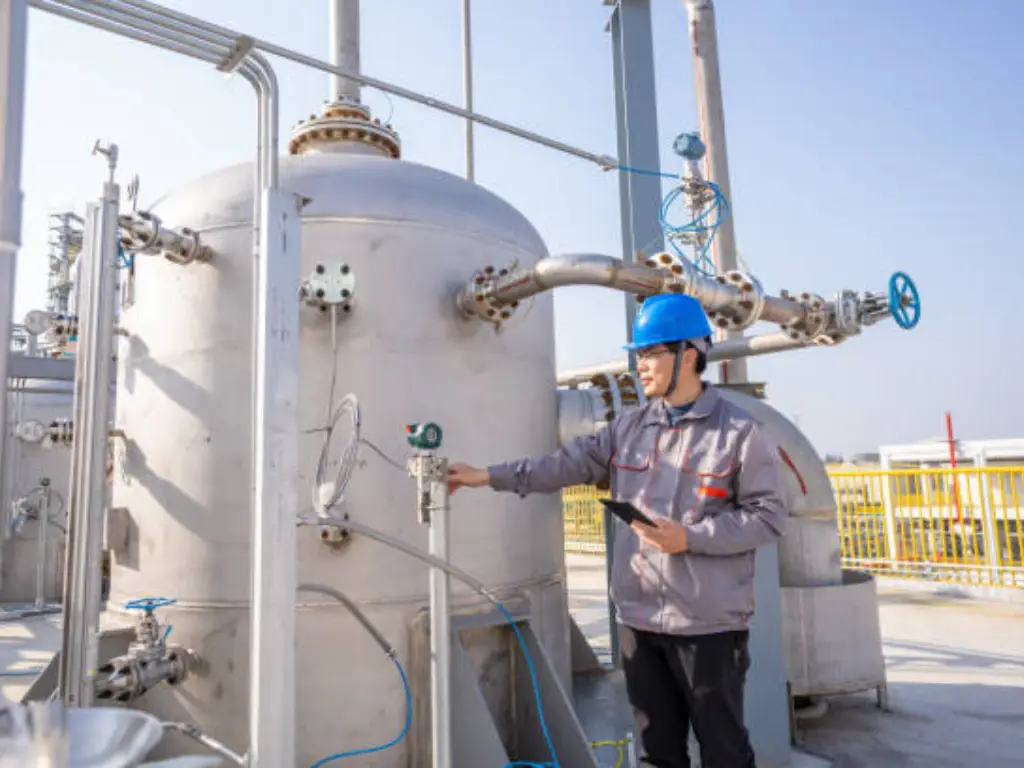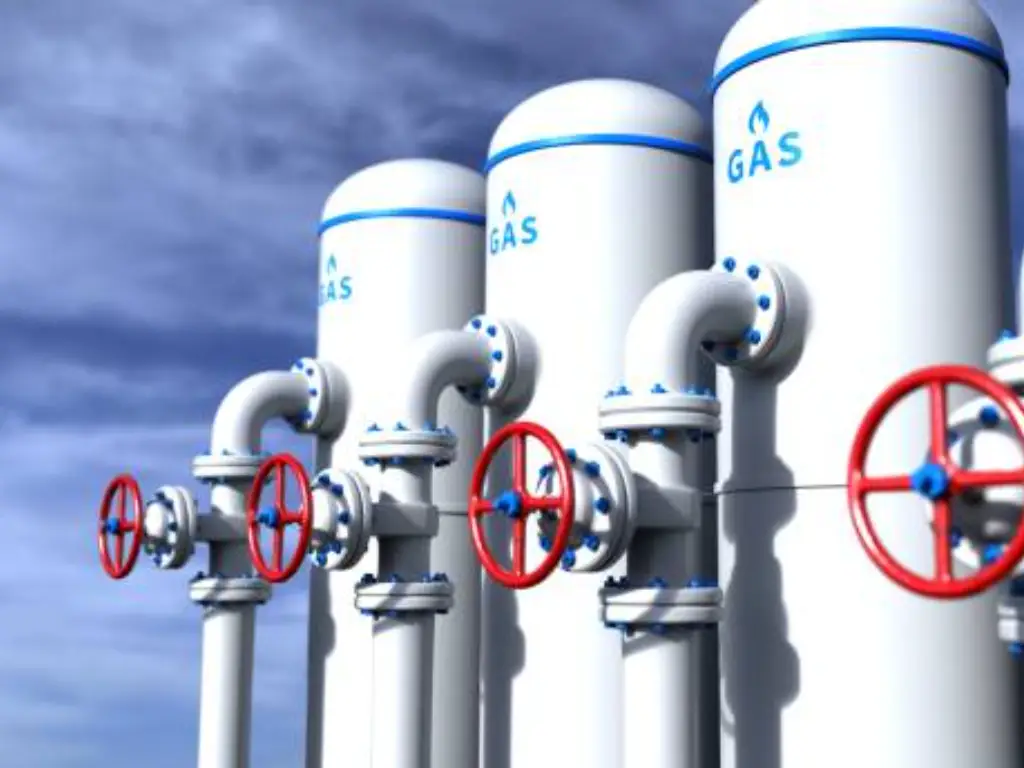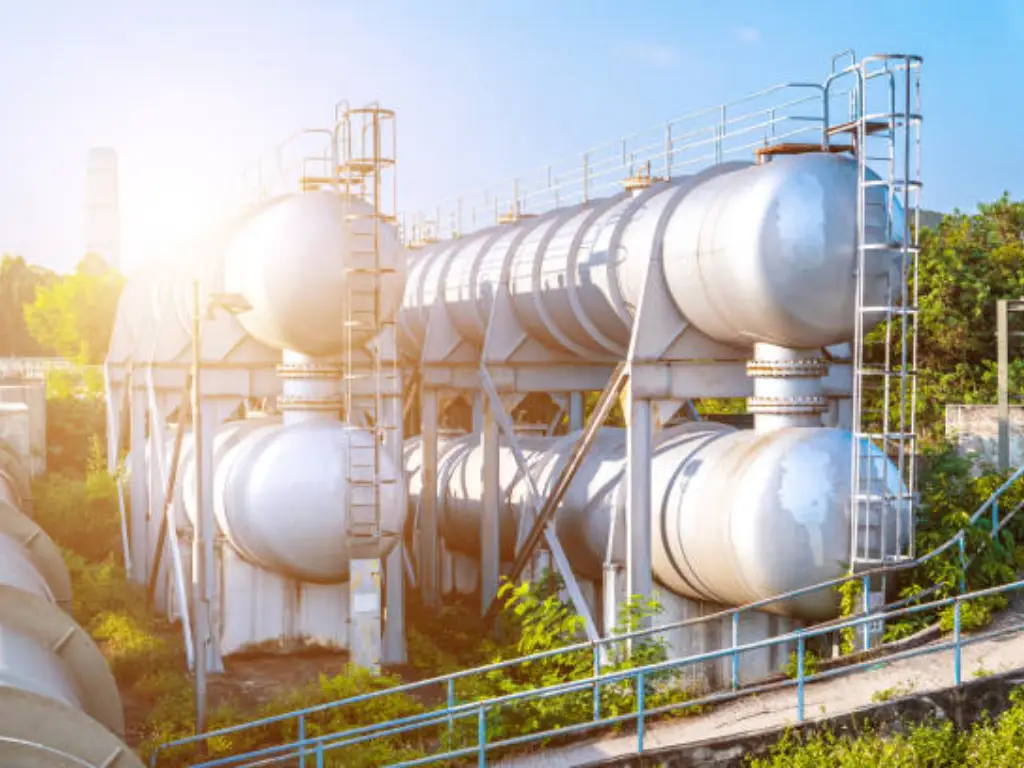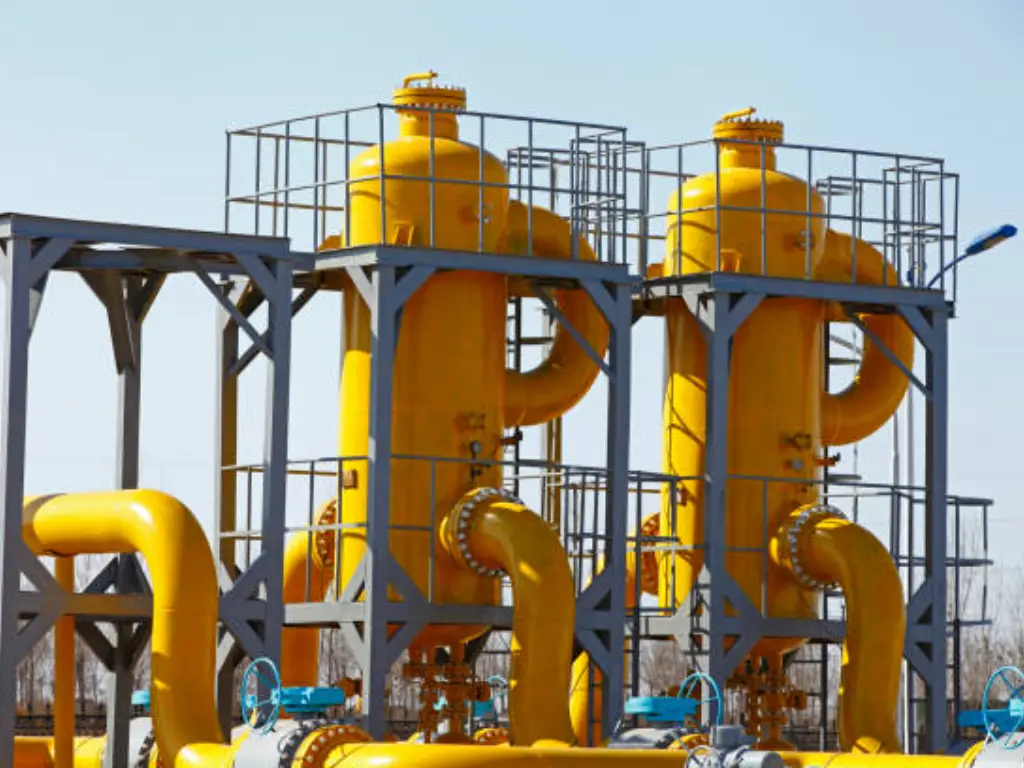Have you ever thought about what keeps your home warm, cooks your food, or even the material used in making plastics such as those used in water bottles and food packaging? The answer often lies in a crucial but lesser-known component of the energy sector: Natural Gas Liquids (NGLs). But what are NGLs and why they are so important in the oil and gas industry? This article takes a closer look at NGLs, examining their different components, the complex methods of extraction and separation, and the different applications of NGLs. Studying NGLs will help you learn about one of the components of the energy sector that affects the world’s economy and your life.

What Are NGLs?
Natural Gas Liquids (NGLs) are a group of heavy hydrocarbon compounds that are found in the gaseous state during the processing of natural gas. These hydrocarbons, which are in the same family of molecules as natural gas and crude oil, include ethane, propane, butane, isobutane, and pentane, making them important components of natural gas. The uniqueness of NGLs is that they are in liquid form at atmospheric pressure if cooled or compressed, unlike natural gas which remains in the gaseous state under similar conditions. NGLs are often produced along with raw natural gas and crude oil, and the process of getting rid of them is referred to as NGL extraction. When separated, NGLs are very valuable because they are used in many industries such as chemical companies, and heating and fuel for transportation among others. NGLs add value to the production of natural gas and crude oil through the extraction and sale of the product.
The Importance of NGLs in the Energy Industry
NGL (Natural Gas Liquids), while just by-products of natural gas production, are critical components with high economic and industrial importance in the energy sector.
Industrial Versatility: NGLs are invaluable at petrochemical plants as they serve as fundamental building blocks for vital items such as plastics and synthetic rubber. To illustrate, ethane, natural gasoline, and butane lay a firm foundation for the manufacture of daily-use products pointing to the wide industrial dependence on these hydrocarbons.
Economic Contribution: The profitability of natural gas production is greatly improved through NGLs. Natural gas companies can therefore generate multiple revenue streams by extracting and selling NGLs separately as high-value products. The economic value of NGLs in different sectors, from petrochemicals to residential energy, is underpinned by consistent market demand.
Strategic Energy Resource: The role of NGLs in the supply chain cannot be understated. Areas without access to natural gas pipelines depend on propane, which is widely used for heating and cooking. This shows their importance in home or corporate energy applications making them strategic resources globally due to alternative sources such as liquified petroleum gases that burn cleaner than other fuels being considered.
Composition and Types of NGLs
- Understanding Hydrocarbons
Hydrocarbons are organic compounds composed mainly of hydrogen and carbon. These hydrocarbon molecules or groups make up natural gas liquids (NGLs) that have different molecular structures as well as boiling points. The natural gas composition, which includes several hydrocarbon liquids, varies depending on factors such as the depth of the deposit, the age of the deposit, and geographic regions like oil sands or shale oil fields from which it is extracted.
- Key Types of NGLs
In this table, we compare ethane, propane, butane, isobutane, and pentane – the main types of NGLs in terms of their uses, boiling points at different temperatures, and key traits.
| NGL Type | Boiling Point (°F) | Primary Uses | Key Characteristics |
| Ethane | -127.5°F | Feedstock for ethylene production | Foundation for Plastics, a major petrochemical feedstock |
| Propan | -43.6°F | Cooking fuel, home heating | Clean-burning, widely used in residential settings |
| Butane | 31.1°F | LPG production, synthetic rubber manufacturing | Can be easily liquefied, used in portable fuel sources |
| Isobutane | 10.9°F | LPG, refrigerants, aerosol propellants | Higher vapor pressure, used in specialized applications |
| Pentane | 97°F | Blowing agent for foam production | Volatile liquid, critical in the production of insulation materials |
Extraction and Separation of NGLs
- Natural Gas Production Process
Natural gas liquids extraction is a key part of natural gas production. The process begins with the extraction of raw natural gas from underground reservoirs, which consists of a complicated mixture including methane, ethane, propane, butane, and pentane along with water vapor, carbon dioxide, and hydrogen sulfide. This raw gas is often referred to as “wet gas” because it contains high levels of hydrocarbons. It requires extensive treatment to separate its components so that natural gas liquids can be sold at higher prices than other product streams. This process, known as the production of natural gas liquids, involves two steps: extraction from the natural gas and separation into its base components, which accounts for approximately 90% v/v of the total production of natural gas liquids.

The first stage of natural gas processing involves removing impurities like water and hydrogen sulfide to prevent pipeline corrosion. After that, the removal of natural gas liquids takes place in a relatively centralized processing plant, where the recovered NGLs are then treated to meet commercial specifications before moving into the NGL transportation infrastructure. This process, commonly referred to as gas processing, is an important step in ensuring that natural gas meets the quality requirements for transportation by pipeline or sale in the market. Proper processing adds value to natural gas and permits the removal of significant industrial and commercial applications through natural gas liquid stripping.
- Techniques for Extracting NGLs
Many different specialized procedures are involved in the extraction and separation of NGLs from natural gases.
- Cooling: To begin with, cooling is used for NGL extraction by liquefying heavier hydrocarbons such as ethane, propane, butane, and pentane from gas streams. Gas processing plants usually undertake this process while optimizing the temperature to condense NGLs at the same time they retain methane in its gaseous state.
- Pressurization: This technique alongside cooling raises the gas stream’s pressure to raise the dew point of hydrocarbons thereby causing them to easily condense. For instance, it is very suitable for capturing those NGLs that have higher boiling points like pentane. Cooling plus pressurization ensure efficient extraction of NGls.
- Fractionation: Following the separation of natural gas from NGLs, these valuable hydrocarbons go through more refining processes through fractionation which separates each one into individual products using their boiling points. In a sequence of distillation columns, this mixture is heated and separated stage-wise; firstly ethane with the lowest boiling point is removed then followed by propane, butane, isobutene, and finally pentanes. Fractionation guarantees purity for every individual NGL component, breaking them down into their base components and rendering them appropriate for particular petrochemical, industrial, and energy applications.
Additionally, the natural gas remaining after NGL separation, known as “dry gas,” primarily consists of methane and is suitable for use as fuel and chemical feedstock.
The Role of Valves in NGL Processing
In the complex field of Natural Gas Liquids (NGL) processing, which involves such valuable components as ethane, propane, and butane, valves are essential. Valves offer accuracy and regulation that makes it possible to conduct these processes smoothly.
The essence of NGL processing cannot be complete without the need to manage the flow in detail. The flow rate of liquid in pipelines and equipment is controlled by using valves, hence keeping conditions steady that are required for better performance and quality.
In addition, another important function of valves is pressure control. Different steps in NGL processing need certain pressures to enable the separation and purification of the different components of NGL. Hence, valves control such pressure levels to avoid any harm to equipment and also for the smooth running of activities.
Valves also play a very big role in safety when it comes to handling NGLs. Safety and relief valves are very important in avoiding overpressure conditions hence reducing the likelihood of a leak or any other danger. It is important to meet safety requirements while safeguarding lives and structures too.
In the same way, during the separation and distribution phases, the various hydrocarbon streams can be well regulated by the use of these valves. This accuracy enables each of the components such as ethane or propane to be separated and processed to the right quality as may be needed.
Applications of NGLs
NGL (Natural gas liquids) serve a versatile and important role in many sectors.
Residential and Commercial Uses:
- Heating and Cooking: NGLs are used widely in homes and industries. Their superior combustion characteristics make small stoves and propane the preferred heating and cooking fuel for areas that do not have access to natural gas pipelines.
Industrielle Verwendungszwecke:
- Petrochemical Industry and Manufacturing: Chemical industry is the main consumer of NGLs in the industrial sector. For example, ethane is converted into ethylene which goes into making various products ranging from plastic bags to artificial rubber. Significant portions of manufacturing depend on processing ethane as well as its delivery systems.
Transportation Fuels:
- Clean Fuel Option: The importance of NGLs cannot be overemphasized when it comes to transportation fuels. Propane mixed with butanes forms liquefied petroleum gas (LPG), which is a commonly used automotive fuel. LPG has become popular because of this burning property thus being used a lot where air quality is a critical issue hence helping reduce emissions and supporting cleaner urban environments.

Regulatory Compliance and Safety Standards
Safety is the most important consideration in the natural gas liquids (NGL) industry and it is therefore important to know the possible dangers to implement effective control measures. This is because NGLs have a high chance of leaking out leading to fires or explosions since they are highly flammable and require high pressure or low temperature to be maintained in their liquid state. Moreover, working with NGL poses health hazards among workers like respiratory problems or skin rashes, highlighting the need for proper regulatory compliance and safety standards, including the use of specialized trucks, ships, and storage tanks.
There exist well-organized regulatory frameworks and safety standards that help in addressing these risks. Some of the approaches used in preventing this include:
- Use of Advanced Detection and Control Technology:
Make sure real-time monitoring and detection systems are installed to detect leaks quickly. Also, employ automatic control systems that will ensure safe operations.
- Regular Maintenance and Inspection:
Keep checking pipelines, valves, storage facilities etcetera regularly for purposes of preventing failures as well as leaks from happening.
- Employee Training and Safety Education:
Provide workers with comprehensive training on safety issues such as safe operating procedures, emergency response, leak handling, etc., so that they may respond swiftly during emergencies.
- Adherence to policies and standards:
Comply with the relevant health and safety regulations and industry good practices, and review continuously for safety performance improvements.
The Future of NGLs in the Energy Sector
The future and current position of natural gas liquids in the energy sector has been changing due to emerging technologies that can increase productivity and lower emissions. For example, new technologies are used in fractional distillation processes to capture carbon dioxide from gas. At this time, some of these technologies have not yet matured, but once they do, they will change this whole industry. After reaching their full potential, these innovations could result in a 51.7 bcf/d NGLs facility that would be compliant with global sustainability goals.
Looking at the long-term impacts on demand for NGLs, there is no decline in sight and a further increase is expected. The petrochemical feedstock and cleaner transportation fuels contribute greatly towards this trend. Ethane and propane are important raw materials for petrochemical plants where products such as plastics and synthetic fibers are manufactured from them. Furthermore, moving towards clean sources of energy puts more emphasis on NGLs as vehicle fuel has a low carbon footprint for sustainable use.
However, the future balance of NGL supply and demand will be determined by several factors such as supply constraints and the market forces. Resource availability, geopolitical changes, and regulatory changes will be the key determinants of production capacities and distribution channels. Hence, even though the demand prognosis is positive, the management of these factors will be vital in maintaining a stable supply chain and fulfilling the needs of the industry. In the face of these challenges, a well-coordinated approach that combines technology advancement and resource management will be critical in unlocking the future of NGLs in the energy sector.

Schlussfolgerung
NGLs are an important product in the energy sector and they are used in various uses such as heating, and manufacturing of plastics among others. Its extraction, processing, and utilization are central to the operations of the global energy market. Thus, NGLs are expected to become even more significant as the energy environment continues to change. As innovations persist and the emphasis is made on the sustainability of the NGLs, they will remain the major contributor to economic development and an essential part of the energy supply.
Optimize Your NGL Processing with DomBor Valves
NGLs are essential components of today’s energy and chemical markets. Maximize your NGL extraction and processing with DomBor Valve’s high-quality industrial valves for the oil and gas industry. The offered line of valves is vast and includes butterfly, ball, and plug valves that are built to be both long-lasting and accurate. Designed to withstand the high standards of NGL processing, our valves ensure efficient flow control, pressure control, and safety. DomBor Valve has been in the business for 20 years and has the best technology to ensure that you get the best results in terms of safety and efficiency. Find out how we can improve our energy assets. For more information, please contact us.









